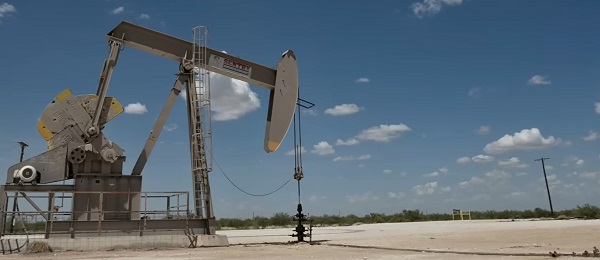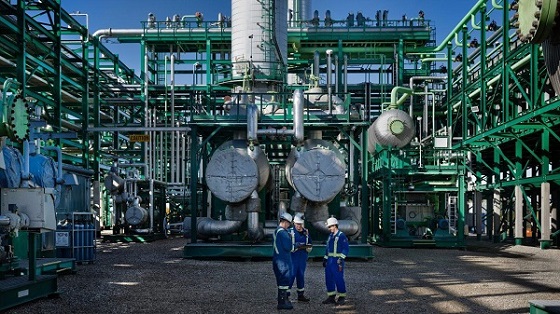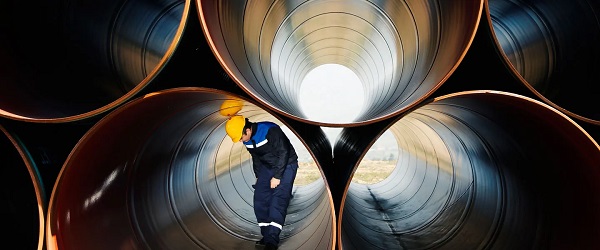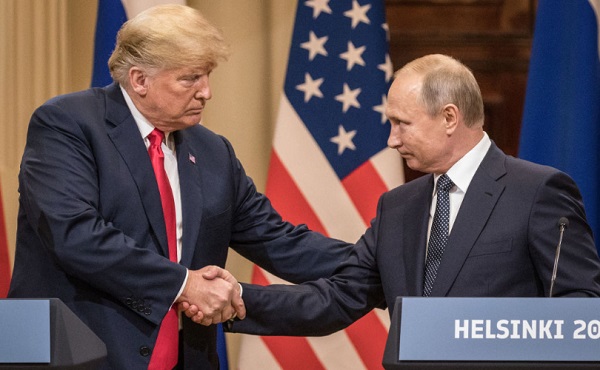Energy
OPEC Delivers Masterful Rebuke To Global Energy Agency Head


From the Daily Caller News Foundation
By
Some readers will remember the infamous May 2021 report from the International Energy Agency (IEA) titled ‘Net Zero by 2050: A Roadmap for the Global Energy Sector.’ The report projected a roadmap for transforming the world’s $300 trillion oil-and-coal-based energy system into one that runs on unreliable, intermittent alternatives like wind and solar.
Most educated observers viewed the report as a piece of propaganda coming from an agency then in the process of transforming itself from a historically reliable source of real data and analysis into just another advocate for the climate alarm narrative. It surprised no one when, just a few years later, Fatih Birol, head of the IEA, publicly boasted about that exact transformation as being the agency’s overt mission now.
One passage in the report’s set of recommendations immediately caught everyone’s eye due to its boldness and transparent illogic. That passage says, “There is no need for investment in new fossil fuel supply in our net zero pathway.”
To reinforce this stunningly absurd notion, Birol, in an interview published by the Guardian upon the study’s release, insisted that, ”If governments are serious about the climate crisis, there can be no new investments in oil, gas and coal, from now – from this year.”
It was a moment when the formerly respected agency shed a great deal of its credibility.
Making matters worse for Birol and IEA, barely a month later a spokesperson for the IEA urged OPEC to “open the spigots” to raise oil production to meet rising global demand that was outstripping the agency’s forecasts as the world recovered from the COVID-19 insanity. Three months after that, Wood MacKenzie, Rystad, and Moody’s had all issued studies directly contradicting IEA’s absurd assessment, and Birol was joining former President Joe Biden in calling for U.S. oil producers to drill more wells and produce more oil.
This sort of ill-advised posturing and self-contradiction is what happens when a scholarly enterprise consciously lurches into advocacy.
At this past week’s CERAWeek conference in Houston, Birol contradicted himself one more time, telling attendees, “I want to make it clear … there would be a need for investment, especially to address the decline in the existing fields. There is a need for oil and gas upstream investments, full stop.”
This latest impulse to respond to the next new thing surely surprised no one. But it was a bridge too far for officials at OPEC to sit by and absorb silently. In a March 13 statement posted on the OPEC website, the cartel reviewed Birol’s and IEA’s recent history of inconsistency and urged Birol to take a step back and consider the impacts it has had and will continue to have on investments for the future.
“Aside from the risk of whiplash that such severe yo-yoing between positions could cause, a serious point needs to be stressed,” OPEC writes. “The world needs unambiguous clarity on the realities of the future of supply and demand. Agencies that recognize the responsibility that comes from offering analysis of the long-term perspectives of the industry should not be shifting positions or mixing messages and narratives every couple of years on this matter, particularly ones that were founded to ensure the security of oil supplies.”
Oof. Blunt, but true. It is a dressing down that is well-deserved and long overdue.
Does Birol’s latest shift signal a recognition that the energy transition for which it has advocated has failed? It’s hard to know.
Regardless, once an agency like IEA makes a public decision to transform itself away from sterile analysis into the realm of advocacy, going back will be hard. Aside from the loss of credibility, which has only increased as Birol has lurched from one position to another and back again, such a transformation completely shifts the organization’s culture. Going back now will require time and a great deal of organizational pain.
Here, another obvious question arises: Is Fatih Birol the right person for this job? It is a question that should have arisen before the loss of so much credibility and trust. For the 32 member countries who subscribe to the agency and pay its bills, there is no time like the present to determine the answer.
David Blackmon is an energy writer and consultant based in Texas. He spent 40 years in the oil and gas business, where he specialized in public policy and communications.
Alberta
Cross-Canada NGL corridor will stretch from B.C. to Ontario

Keyera Corp.’s natural gas liquids facilities in Fort Saskatchewan. Photo courtesy Keyera Corp.
From the Canadian Energy Centre
By Will Gibson
Keyera ‘Canadianizes’ natural gas liquids with $5.15 billion acquisition
Sarnia, Ont., which sits on the southern tip of Lake Huron and peers across the St. Clair River to Michigan, is a crucial energy hub for much of the eastern half of Canada and parts of the United States.
With more than 60 industrial facilities including refineries and chemical plants that produce everything from petroleum, resins, synthetic rubber, plastics, lubricants, paint, cosmetics and food additives in the southwestern Ontario city, Mayor Mike Bradley admits the ongoing dialogue about tariffs with Canada’s southern neighbour hits close to home.
So Bradley welcomed the announcement that Calgary-based Keyera Corp. will acquire the majority of Plains American Pipelines LLP’s Canadian natural gas liquids (NGL) business, creating a cross-Canada NGL corridor that includes a storage hub in Sarnia.
“As a border city, we’ve been on the frontline of the tariff wars, so we support anything that helps enhance Canadian sovereignty and jobs,” says the long-time mayor, who was first elected in 1988.
The assets in Sarnia are a key piece of the $5.15 billion transaction, which will connect natural gas liquids from the growing Montney and Duvernay plays in B.C. and Alberta to markets in central Canada and the eastern U.S. seaboard.
NGLs are hydrocarbons found within natural gas streams including ethane, propane and pentanes. They are important energy sources and used to produce a wide range of everyday items, from plastics and clothing to fuels.
Keyera CEO Dean Setoguchi cast the proposed acquisition as an act of repatriation.
“This transaction brings key NGL infrastructure under Canadian ownership, enhancing domestic energy capabilities and reinforcing Canada’s economic resilience by keeping value and decision-making closer to home,” Setoguchi told analysts in a June 17 call.
“Plains’ portfolio forms a fully integrated cross Canada NGL system connecting Western Canada supply to key demand centres across the Prairie provinces, Ontario and eastern U.S.,” he said.
“The system includes strategic hubs like Empress, Fort Saskatchewan and Sarnia – which provide a reliable source of Canadian NGL supply to extensive fractionation, storage, pipeline and logistics infrastructure.”
Martin King, RBN Energy’s managing director of North America Energy Market Analysis, sees Keyera’s ability to “Canadianize” its NGL infrastructure as improving the company’s growth prospects.
“It allows them to tap into the Duvernay and Montney, which are the fastest growing NGL plays in North America and gives them some key assets throughout the country,” said the Calgary-based analyst.
“The crown assets are probably the straddle plants in Empress, which help strip out the butane, ethane and other liquids for condensate. It also positions them well to serve the eastern half of the country.”
And that’s something welcomed in Sarnia.
“Having a Canadian source for natural gas would be our preference so we see Keyera’s acquisition as strengthening our region as an energy hub,” Bradley said.
“We are optimistic this will be good for our region in the long run.”
The acquisition is expected to close in the first quarter of 2026, pending regulatory approvals.
Meanwhile, the governments of Ontario and Alberta are joining forces to strengthen the economies of both regions, and the country, by advancing major infrastructure projects including pipelines, ports and rail.
A joint feasibility study is expected this year on how to move major private sector-led investments forward.
Business
B.C. premier wants a private pipeline—here’s how you make that happen

From the Fraser Institute
By Julio Mejía and Elmira Aliakbari
At the federal level, the Carney government should scrap several Trudeau-era policies including Bill C-69 (which introduced vague criteria into energy project assessments including the effects on the “intersection of sex and gender with other identity factors”)
The Eby government has left the door (slightly) open to Alberta’s proposed pipeline to the British Columbia’s northern coast. Premier David Eby said he isn’t opposed to a new pipeline that would expand access to Asian markets—but he does not want government to pay for it. That’s a fair condition. But to attract private investment for pipelines and other projects, both the Eby government and the Carney government must reform the regulatory environment.
First, some background.
Trump’s tariffs against Canadian products underscore the risks of heavily relying on the United States as the primary destination for our oil and gas—Canada’s main exports. In 2024, nearly 96 per cent of oil exports and virtually all natural gas exports went to our southern neighbour. Clearly, Canada must diversify our energy export markets. Expanded pipelines to transport oil and gas, mostly produced in the Prairies, to coastal terminals would allow Canada’s energy sector to find new customers in Asia and Europe and become less reliant on the U.S. In fact, following the completion of the Trans Mountain Pipeline expansion between Alberta and B.C. in May 2024, exports to non-U.S. destinations increased by almost 60 per cent.
However, Canada’s uncompetitive regulatory environment continues to create uncertainty and deter investment in the energy sector. According to a 2023 survey of oil and gas investors, 68 per cent of respondents said uncertainty over environmental regulations deters investment in Canada compared to only 41 per cent of respondents for the U.S. And 59 per cent said the cost of regulatory compliance deters investment compared to 42 per cent in the U.S.
When looking at B.C. specifically, investor perceptions are even worse. Nearly 93 per cent of respondents for the province said uncertainty over environmental regulations deters investment while 92 per cent of respondents said uncertainty over protected lands deters investment. Among all Canadian jurisdictions included in the survey, investors said B.C. has the greatest barriers to investment.
How can policymakers help make B.C. more attractive to investment?
At the federal level, the Carney government should scrap several Trudeau-era policies including Bill C-69 (which introduced vague criteria into energy project assessments including the effects on the “intersection of sex and gender with other identity factors”), Bill C-48 (which effectively banned large oil tankers off B.C.’s northern coast, limiting access to Asian markets), and the proposed cap on greenhouse gas (GHG) emissions in the oil and gas sector (which will likely lead to a reduction in oil and gas production, decreasing the need for new infrastructure and, in turn, deterring investment in the energy sector).
At the provincial level, the Eby government should abandon its latest GHG reduction targets, which discourage investment in the energy sector. Indeed, in 2023 provincial regulators rejected a proposal from FortisBC, the province’s main natural gas provider, because it did not align with the Eby government’s emission-reduction targets.
Premier Eby is right—private investment should develop energy infrastructure. But to attract that investment, the province must have clear, predictable and competitive regulations, which balance environmental protection with the need for investment, jobs and widespread prosperity. To make B.C. and Canada a more appealing destination for investment, both federal and provincial governments must remove the regulatory barriers that keep capital away.
-

 Business19 hours ago
Business19 hours agoMost Canadians say retaliatory tariffs on American goods contribute to raising the price of essential goods at home
-

 National1 day ago
National1 day agoWomen and girls beauty pageant urges dismissal of transgender human rights complaint
-

 Alberta19 hours ago
Alberta19 hours agoCross-Canada NGL corridor will stretch from B.C. to Ontario
-

 International2 days ago
International2 days agoSupport for the Ukraine war continues because no one elected is actually in charge.
-

 Business2 days ago
Business2 days agoTrump slaps Brazil with tariffs over social media censorship
-

 Business2 days ago
Business2 days agoCBC six-figure salaries soar
-

 Business20 hours ago
Business20 hours agoB.C. premier wants a private pipeline—here’s how you make that happen
-

 Addictions2 days ago
Addictions2 days agoCan addiction be predicted—and prevented?






